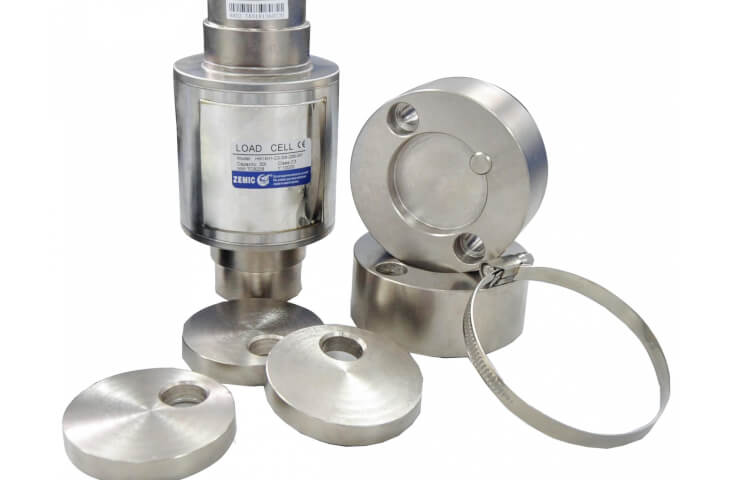What is a load cell?
The strain gauge sensor, in accordance with clause 2.1.2 of GOST 8.631-2013, is a weight measuring element that responds to a change in the magnitude of the physical impact (force) and converts it into an electrical signal. In fact, this is a resistor that changes the ohmic resistance parameter with respect to the applied force. In practice, they are widely used to measure mass and load in weighing systems. Depending on the application, various types of strain gauges are used, differing both in the principle of operation and in design features.
Design
As an example, consider the simplest version of a strain gauge, where a strain gauge acts as a sensitive element. Structurally, it can be represented as a thin elastic wire or film distributed over the controlled surface.
The work of the strain gauge is based on Hooke's law, which states that the change in electrical resistance with respect to the initial position of the element is proportional to the elongation or compression of the sensor.
Device and principle of operation
The basis of the load cell is a strain gauge equipped with special contacts fixed on the front of the measuring panel. During the measurement, the sensitive contacts of the panel are in contact with the object. Their deformation occurs, which is measured and converted into an electrical signal transmitted to the processing and display elements of the measured value of the strain gauge.
Depending on the scope of functional use, sensors differ both in types and types of measured quantities. An important factor is the required measurement accuracy. For example, a load cell load cell at the exit from the bakery is absolutely not suitable for electronic pharmaceutical scales, where every hundredth of a gram is important.
Advantages and disadvantages of strain gauges
Strain gauges are widely used due to their properties:
the possibility of a monolithic connection of the strain gauge with the part under study;
small thickness of the measuring element, which ensures high measurement accuracy with an error of 1-3%;
ease of fastening, both on flat and curved surfaces;
the ability to measure dynamic deformations that change with a frequency of up to 50,000 Hz;
the possibility of carrying out measurements in difficult environmental conditions in the temperature range from -240 to +1100˚С;
the possibility of measuring parameters simultaneously at many points of the parts;
the possibility of measuring the deformation of objects located at large distances from strain gauge systems;
the ability to measure deformations in moving (rotating) parts.
Of the shortcomings, it should be noted:
influence of weather conditions (temperature and humidity) on the sensitivity of sensors;
insignificant changes in the resistance of the measuring elements (about 1%) require the use of signal amplifiers.
When strain gauges operate in high-temperature or aggressive environments, special measures are required to protect them.
How to choose?
When choosing a model for measuring any physical effort or weight, it is necessary to be guided by the basic parameters of the sensor. These characteristics include:
Measurement range - determines the boundaries of the weight load that the load cell can fix;
Accuracy class - is selected depending on the parameters of the equipment and requirements for measurement accuracy;
Connection diagram - according to the number of connected outputs, a four or six-wire circuit can be used;
Thermal compensation - for strain gauges where high measurement accuracy is required, it is important to take into account the influence of ambient temperature, thermal compensating elements are used;
Degree of protection - denoted by the IP index and determines the resistance to dust and moisture on the load cell.
ASP official website https://асп.рф/







